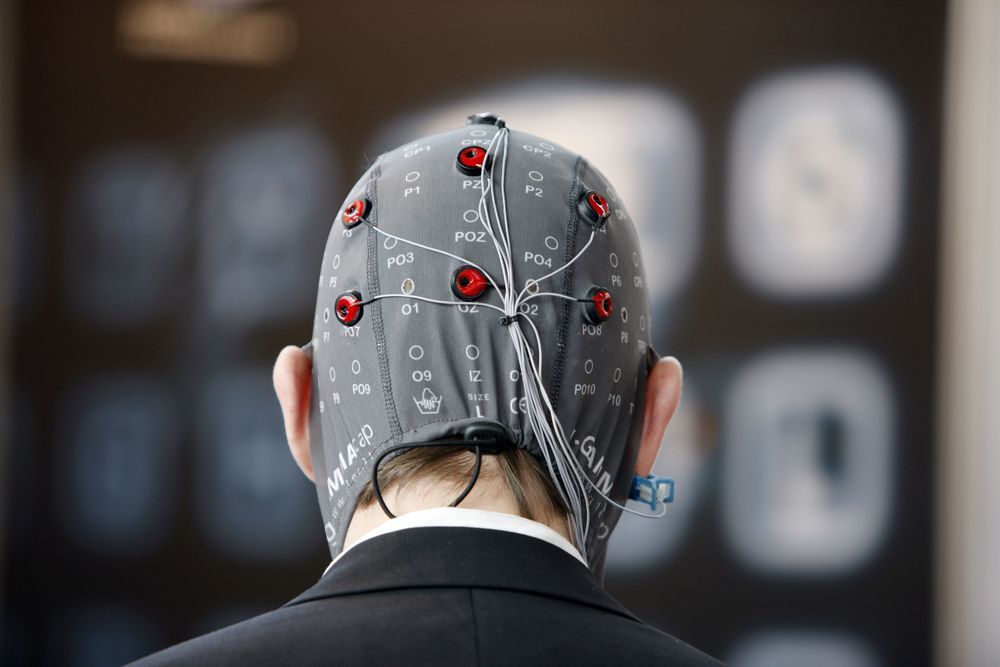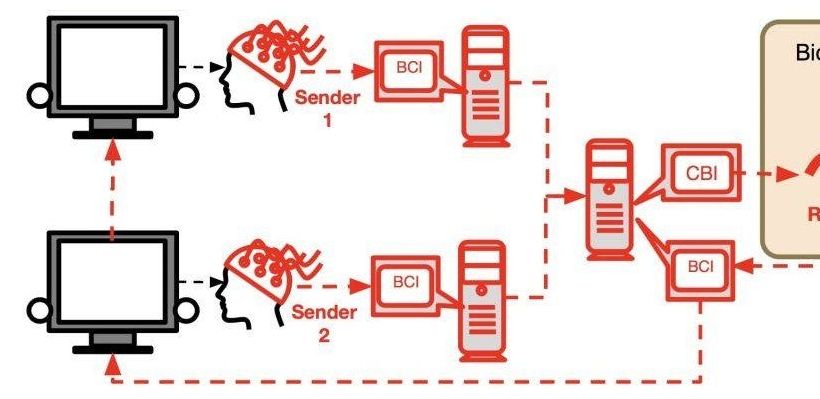Scientists and religious leaders joined forces to create programs on neuroscience, cosmology—and even some evolutionary science.



Cientistas conectaram o cérebro de 3 pessoas, permitindo que elas compartilhassem os pensamentos! smile
Neuroscientists have successfully hooked up a three-way brain connection to allow three people share their thoughts – and in this case, play a Tetris-style game. The team thinks this wild experiment could be scaled up to connect whole networks of people, and yes, it’s as weird as it sounds.
It works through a combination of electroencephalograms (EEGs), for recording the electrical impulses that indicate brain activity, and transcranial magnetic stimulation (TMS), where neurons are stimulated using magnetic fields.
The researchers behind the new system have dubbed it BrainNet, and say it could eventually be used to connect many different minds together, even across the web.

It might already feel like social media is taking up too much of our mental space, but just wait until it’s literally inside of our brains.
Physicists and neuroscientists have developed the world’s first “brain-to-brain” network, using electroencephalograms (EEGs), which record electrical activity in the brain, and transcranial magnetic stimulation (TMS), which can transmit information into the brain, to allow people to communicate directly with each other’s brains — a new and thrilling (and a little terrifying?) example of science fiction brought to life.
Researchers at the University of Washington in Seattle announced last week that they successfully used their interface, which they call BrainNet, to have a small group of people play a collaborative “Tetris-like” game — with their minds.

Be gone flat earthism.
The nature-versus-nurture argument of intelligence just got a lot more complicated with the discovery that the environment can modify the expression of a key gene in the brain, affecting intelligence far more than we previously thought.
Such a finding may not come as a surprise if you remember that numerous genes influence our IQ and stressful experiences can lock and unlock genes in our brains. Yet having hard evidence of the link will no doubt stir debate on just what it means to be “smart”.
Researchers from the Charité — Universitätsmedizin Berlin analysed the characteristics of a number of genes among a group of healthy adolescents, and compared the results with intelligence scores and various neurological traits.


Perhaps you read the stories last week (including the NYT piece linked to below) about the researchers at Johns Hopkins, led by Gul Dolen, who gave ecstasy (MDMA) to octopuses and found that they, like humans, became more social on the drug. Dr. Dolen talked about using the octopus as a model organism in neuroscience research during last Friday’s day-long workshop hosted by the NIH BRAIN 2.0 working group.
By dosing the tentacled creatures with MDMA, researchers found they share parts of an ancient messaging system involved in social behaviors with humans.


Searching for a more direct connection between the gut and the brain, researchers were shocked to see that distance spanned by a single synapse, relaying the signal in less than 100 milliseconds, less than the blink of an eye. The finding has profound implications for the understanding of appetite and appetite suppressants, most of which target slow-acting hormones rather than fast-acting synapses.
